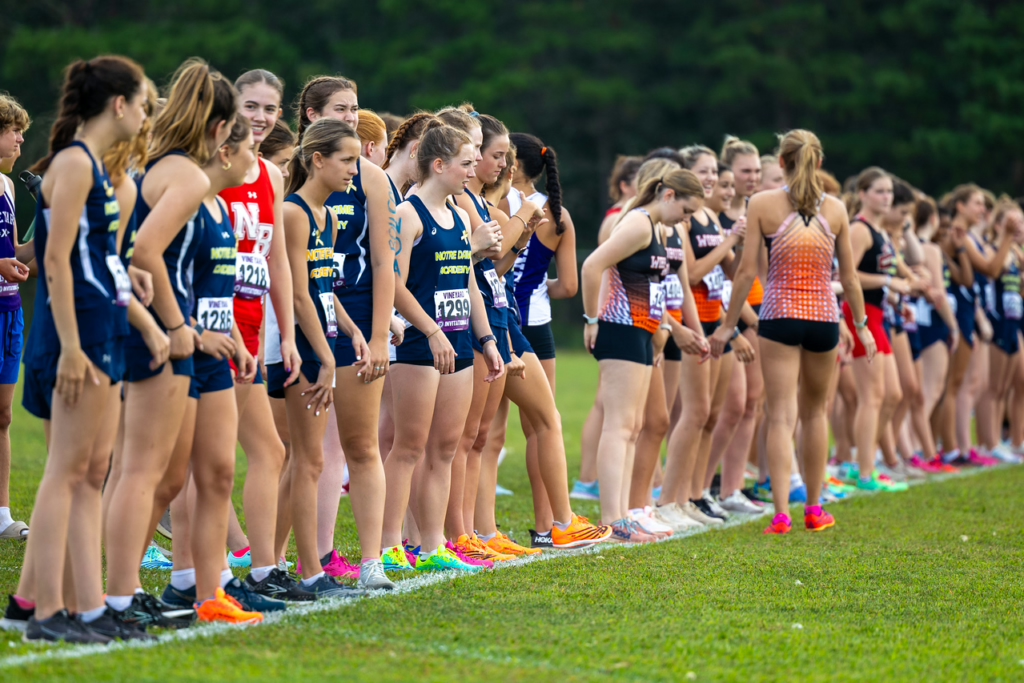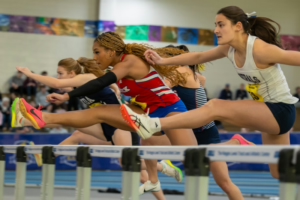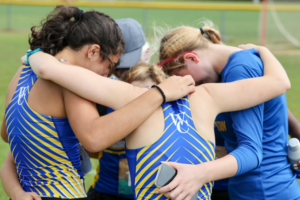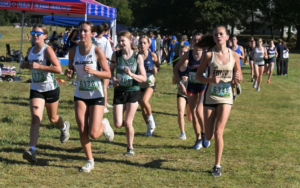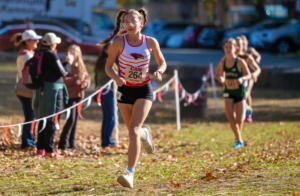Parent’s Guide to the 2025 Cross Country Season
Imagine it.
It’s the second week of School. You’ve checked off everything. School Supplies. Books. Back to school clothes. Then your student-athlete comes home and tells you there’s a spike night tonight. They need to be there. They need spikes. Also, they have a Cross-Country meet tomorrow. Which they need them for.
You might have a few questions: What’s Cross-Country? What’s a spike? What’s a Spike Night?
All normal reactions. That’s why we’re here. This will help serve as a guide for parents of new Cross Country Runners and hopefully make some new fans by the end of the season.
What
Cross Country is a team and individual sport where athletes’ race over natural terrain like grass, dirt, trails, etc. For High School, races can vary in length from 3K to 5K.
What’s a K? A Kilometer.
Why the metric system? It’s an international sport
How far is 5K? 3.1 Miles.
It’s a race. How is it team sport? Teams compete with Seven runners. (They can compete with more at most races, but only seven score). The team with the lowest score wins. Each runner’s finishing place equals the number of points they earn. Their score is determined by their first five runners.
If your first five runners go 1,3,5,8,10, they earn a score of 27. The sixth and seventh runners still count in the overall race and can displace other team’s runners, giving them a higher score.
Gear/Supplies
What do you need? Like most sports, there’s plenty of equipment and gear that you may or may not need.
Shoes
What you absolutely need is a good pair of running shoes. Everything else is secondary to that. Your athlete won’t be able to train properly without them.
What is a good pair of running shoes? A good pair of running shoes has the correct amount of support and cushioning for the Individual. That last part is important. Runners love to recommend their personal favorites but it’s important to understand everyone’s feet are different.

So, what about support and cushion? This is when going in and having an expert look at your feet and watch you walk/run is essential. The cushion and structure of each shoe varies. What you need depends on the way your body moves. So go in and get your feet checked out.
Spikes
Spikes are encouraged, but not completely necessary. Your athlete will spend most of their time at practice (if not all) in their running shoes. Spikes are typically only worn during races and the occasional workout. That can vary depending on the coach and athlete.
You can also race in your running shoes if you want. Plenty of athletes will do this. They offer a lot more support and cushion. If after day one your athlete comes home and decides Cross Country is their true calling, go grab a pair of spikes. If they’re unsure, hold off. They can run a few races first and then decide.
What are spikes? The best comparison is probably cleats. Spikes are designed for competition. Everything that goes into them is built for speed more so than comfort. While they should still be comfortable, they are not something you would ever run a marathon in. They fit a lot snugger, and as mentioned before, have little to no support.

Terminology is where things can get confusing. Spikes can refer to both the shoe itself, as well as the metal spikes on the bottom. Those pieces, if taken care of properly, screw easily in and out. If you don’t want them to get stuck, it’s best to take them out after races. Especially after a muddy/wet race.
There are also different kinds of spikes. This is where it’s best to defer to your coach, especially if you’re unsure. They come in different shapes and lengths. For example, if its wet and the course is soaked and muddy, you may want longer spikes to help grip.
The problem many high schools run into (pun intended) is that their courses have a considerable amount of pavement. Most schools are not fortunate enough to have miles of trails and grass fields to race on. In this case you may need to take the spikes out and put in what are called blanks. They cover the hole to protect it from debris while making the sole flat to comfortably run over pavement.
With running, Footwear tends to be king, but here’s a quick list of some other essentials to consider.
Socks: The more you run the more you’ll want a good pair of running socks. What makes them running socks? Moisture wicking material. Anything but cotton should work. Cotton sticks to your feet when wet and will cause blisters. Most running socks are a synthetic blend of polyester and nylon. However, Wool socks are popular as well and are great when it’s wet out.
Watch: It may be cool to run without a watch, but at some point you’re going to want to time yourself and not rely on someone else. While GPS watches have become the norm, a standard stopwatch still gets the job done.
Nutrition: For shorter races like 5K (short compared to Marathons and Ultra Marathons) you don’t need to get fancy. Hydration is key. There are plenty of electrolyte supplements to help during those early season meets when it still feels like summer.
Running Apparel: Like socks, you want to stay away from cotton to prevent blisters and chafing. What you wear will depend on the weather so make sure you’re ready for anything. The key is sticking with moisture wicking material.
Where/When
The Cross-Country season runs (pun intended) from early September until mid to late November. Because of the time frame, you may need both summer and winter apparel. This is New England, and no one has a clue what the weather may be like on a Saturday morning in November.
Your athlete may compete once or twice a week at two different kinds of meets
During the week they will often compete in their league meets against the teams that comprise whatever conference/league their school is in. Typically, this is in the form of dual meets, where they compete against one other team. This can vary from league though. Like other sports, there are both home and away meets.
The setting is quite a bit different on the weekend where you will travel to invitational meets. These can vary in size. They can have anywhere between four races to…18. While that’s rare, the point is they’re a lot bigger. Think 20-30 teams. There’s typically at least a Varsity, Junior Varsity, and a Freshmen race.
In November you will have the state championship races. The format is like Invitationals, the exception being there is only Varsity races.
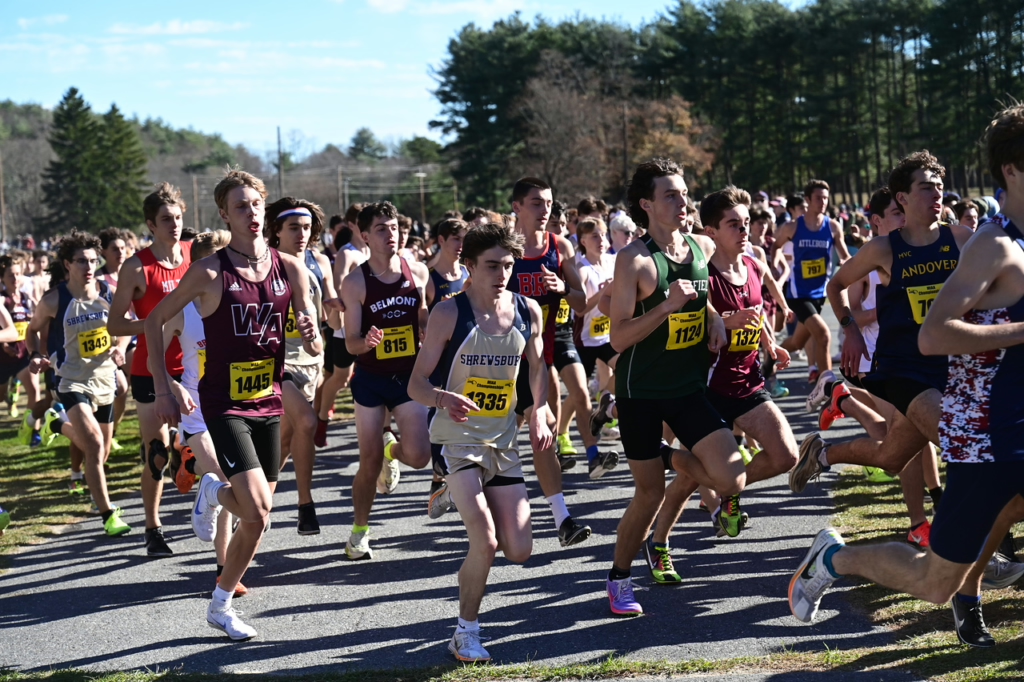
These races can take place all over the state.
Some important locations in Massachusetts are:
Wrentham Development Center, Wrentham, MA
Willard Field, Devens, MA
Northfield Mountain, Northfield, MA
Stanley Park, Westfield, MA
Cape Cod Fair Grounds, East Falmouth, MA
Franklin Park, Boston, MA
Team Nights
Marathon Sports provides team nights for local schools where we offer 20% off (excludes electronics and sale items) as well as complementary pizza and other giveaways.
If your team doesn’t have one on the books, you can reach out to your local store and speak to the manager, or email
dennis.sheppard@marathonsports.com




